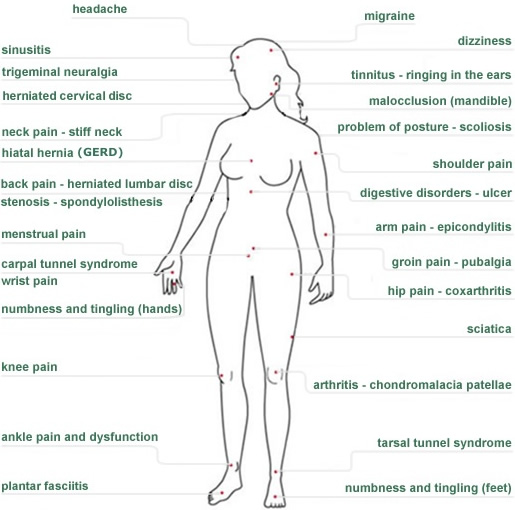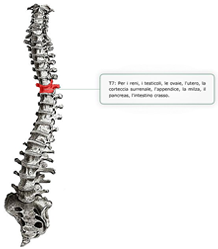Meridian Therapy in Applied Kinesiology
Meridian Therapy in Applied Kinesiology
Anyone who has ever been treated by me has experienced the way in which acupuncture points are used in Applied Kinesiology. I use them either to diagnose or treat in almost every patient visit. Meridian therapy, as it is called, is in fact one of the most effective natural pain relief techniques it can be used for both acute and chronic conditions.
In this newsletter, I’d like to unveil some of the mystery behind these techniques, and how they have evolved since the early days in Applied Kinesiology.
Yin & Yang
The concept of yin and yang is a fundamental part of Traditional Chinese Medicine. For thousands of years, the Chinese have classified everything in the universe as either yin or yang. The terms yin and yang describe how opposite forces are actually complementary and interdependent.
The Taiji, which is the circular symbol for yin and yang, symbolizes that even in opposites, where there is one, there is always the other. An example of this would be male and female. Male is yang and female is yin. However, men also contain some yin or female hormones (i.e., progesterone, estrogen), just as females, who are yin, contain some male hormones (i.e., androgen, testosterone).
In Traditional Chinese Medicine (TCM), organs and glands are also classified as either yin or yang. Generally speaking, hollow organs such as the gallbladder, small intestine, and stomach are classified as yang, while solid organs such as the lung, liver, and spleen are classified as yin.
Qi and the Meridians
There is an invisible flow of electromagnetic energy that sustains all living things. The Chinese refer to this energy as Qi, and it is the underlying principle in TCM and martial arts. Qi flows through our bodies as tight narrow channels known as meridians.
In our bodies, Qi traverses 12 bilateral channels known as meridians. This energy, or Qi, flows continuously both upward and downward in a one-way direction. When Qi reaches the end of a meridian, it continues its flow in an adjacent meridian. A full circuit is achieved once the Qi has passed through all 12 meridians.
Of these 12 meridians, 6 are yin meridians and 6 are yang meridians. The yin meridians all begin or end on the chest, while the yang meridians all begin or end on the head. The yin meridians travel from the ground up, and the yang meridians travel from the top down. The flow of Qi continues through all 12 meridians before the process repeats itself beginning once again at the lung meridian and so and so forth throughout life.
The Meridian Muscle Association
The Chinese and other cultures have utilized the meridians to treat sickness and disease for thousands of years. However, it remained virtually unknown in the Western world until 1962 when German acupuncturist Felix Mann published the first comprehensive acupuncture textbook in English entitled Acupuncture: The Ancient Chinese Art of Healing. By 1968, Michigan chiropractor and founder of Applied Kinesiology, Dr. George Goodheart, found that an imbalance of energy within the meridian system was sometimes related to muscles which tested weak. Building on his previous discoveries of organ-muscle relationships, Goodheart found for example, that the subscapularis, associated with the heart, is also influenced by the heart meridian. Likewise, the tensor fascia lata and iliotibial band, associated with the large intestine, is also influenced by the large intestine meridian and so on.
Modern Therapeutic Uses of the Meridian System in Applied Kinesiology
Today we use the meridian system in multiple ways. Apart from the highly effective pain relief techniques which mainly involve tapping the head points, the meridians are used to balance neurotransmitters, emotions, and the immune system. It is also used for structural imbalances related to weak muscles as well as for TMJ disorders and tooth problems.
To find out whether meridian therapy and Applied Kinesiology can help your specific condition.

 SCHEDULE AN APPOINTMENT
SCHEDULE AN APPOINTMENT









